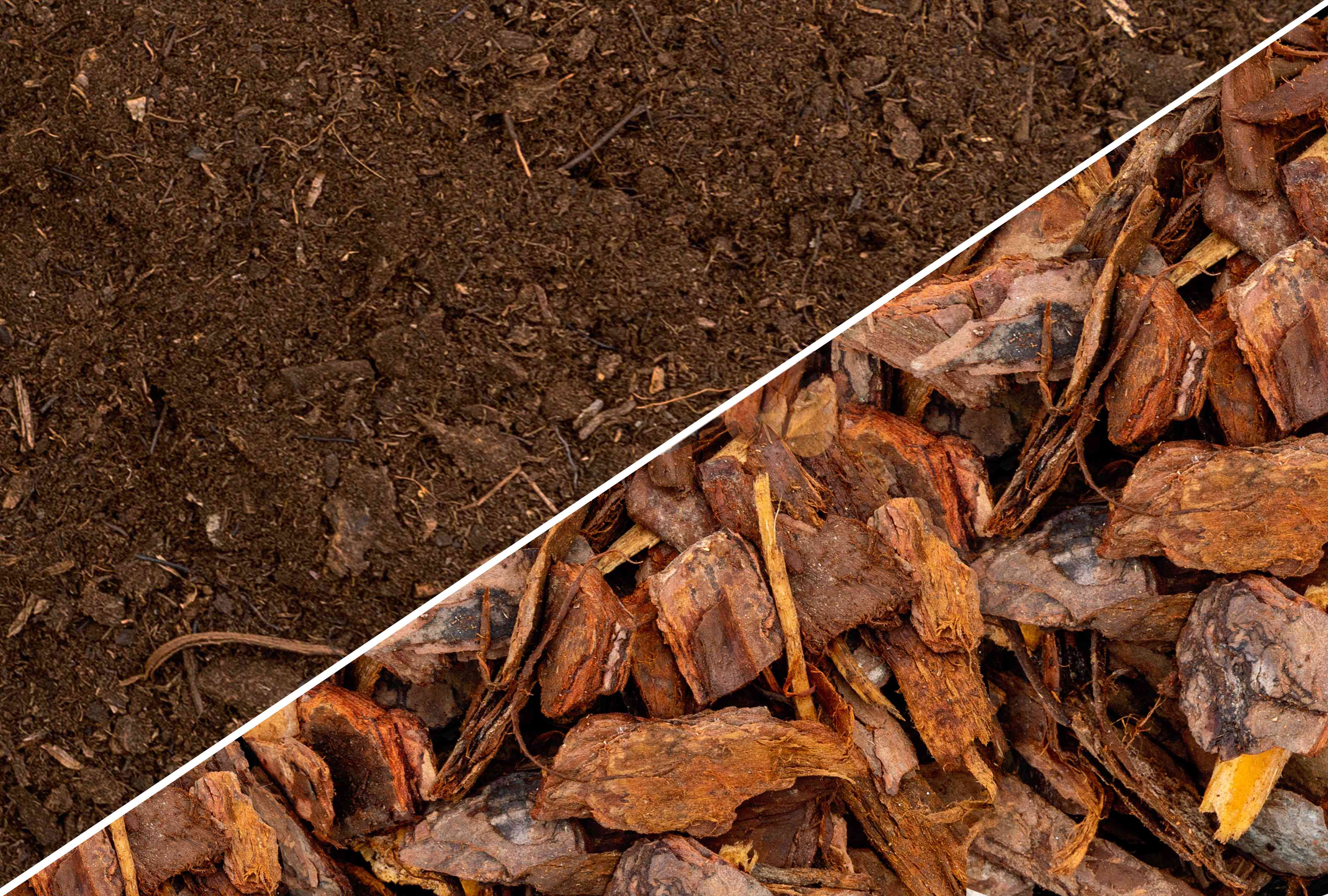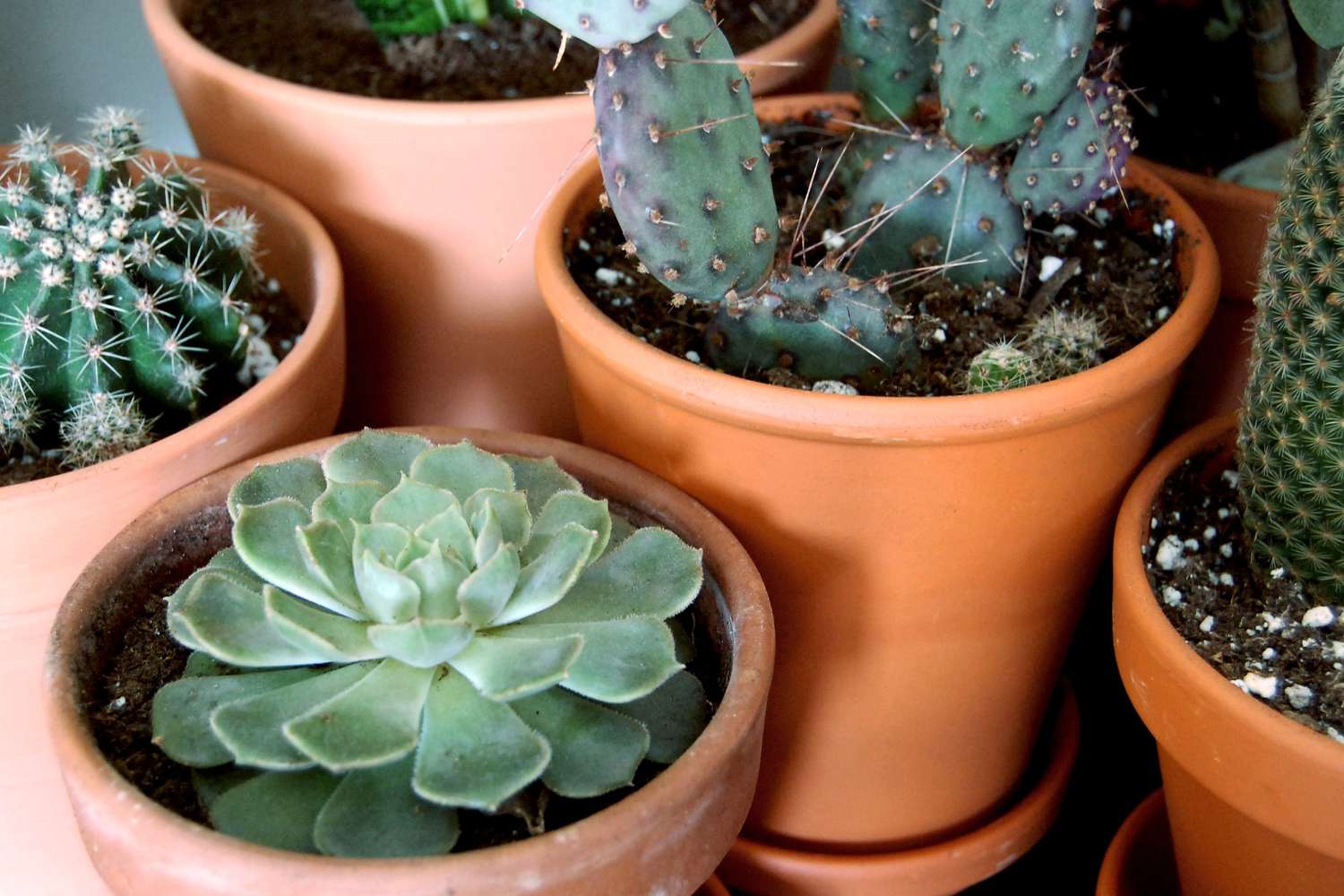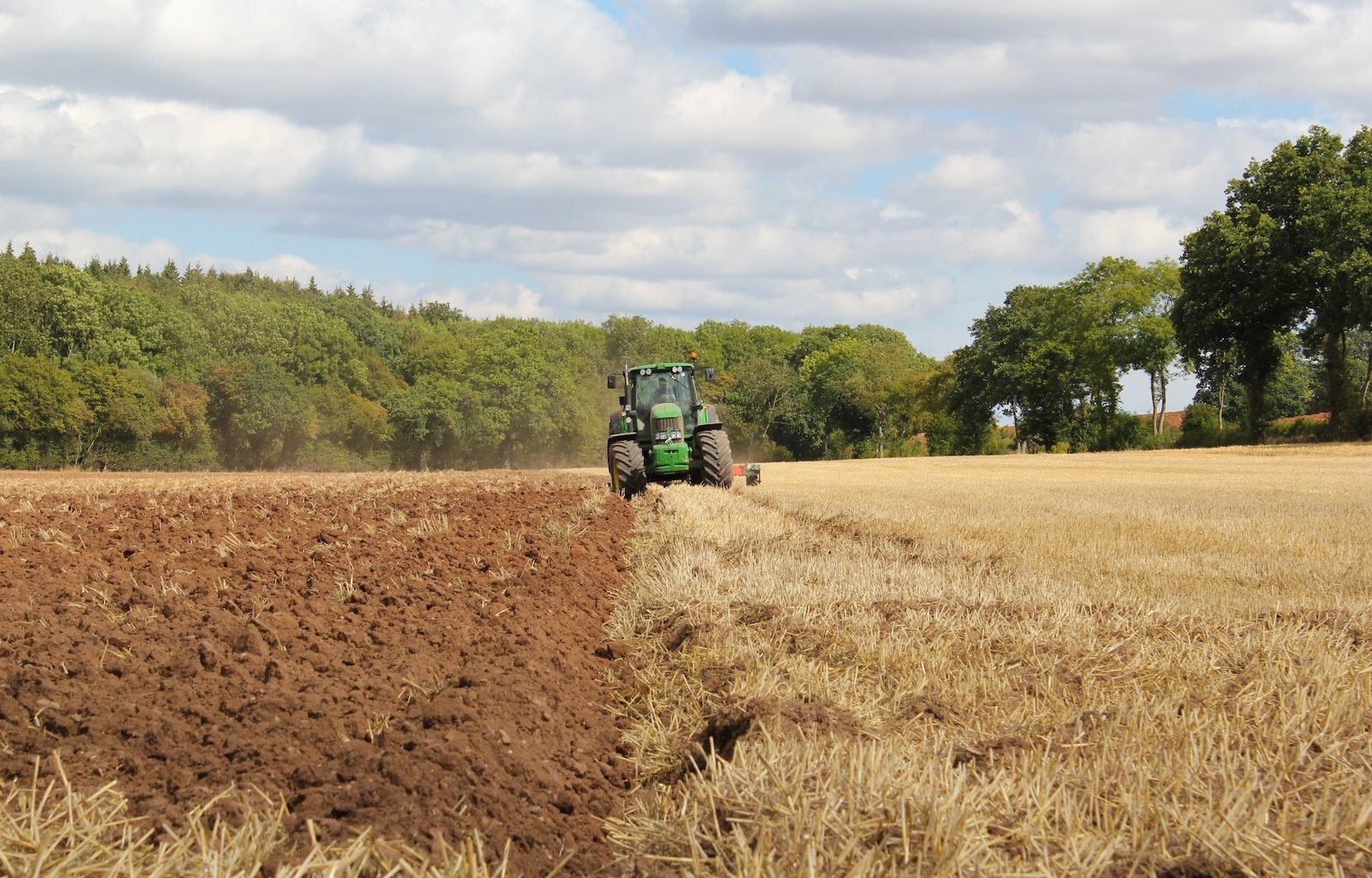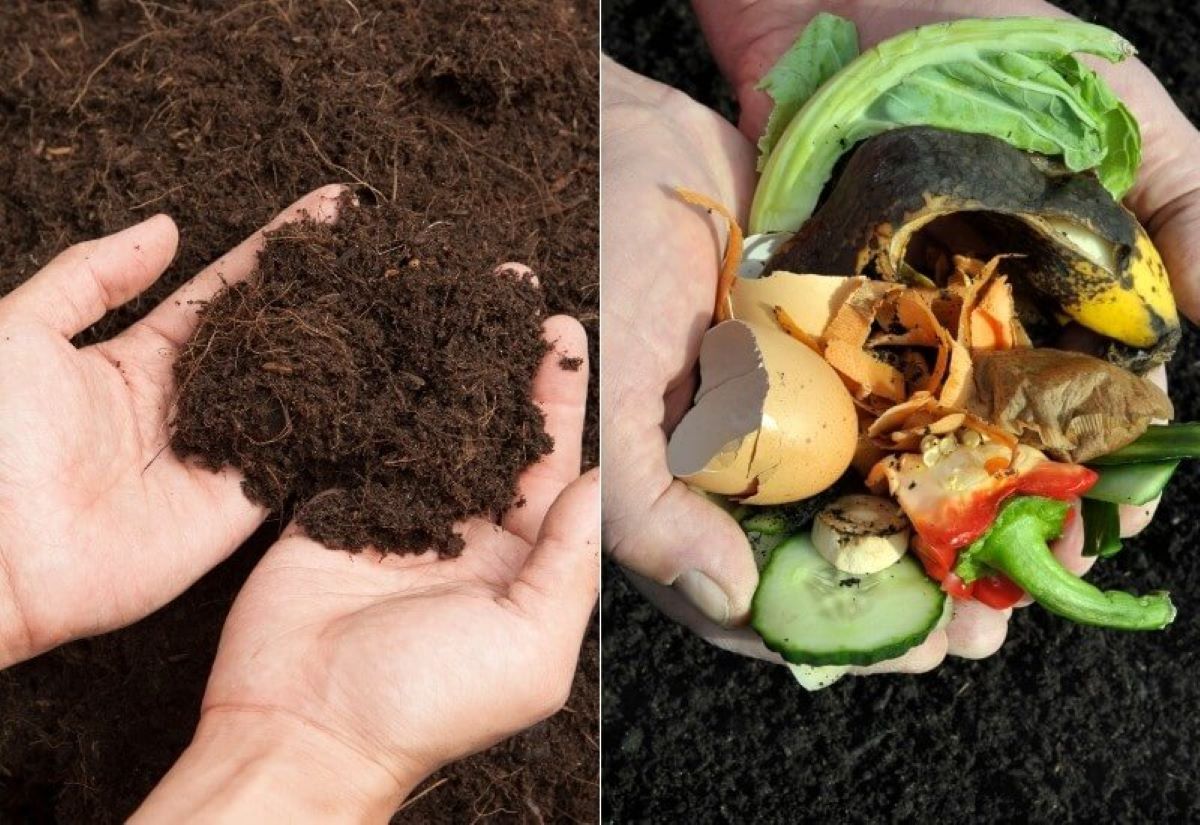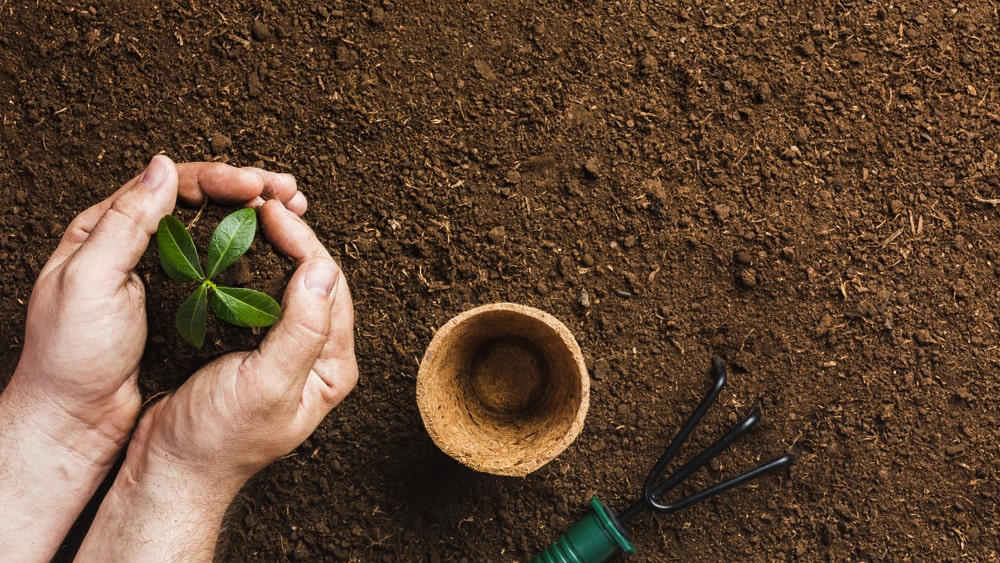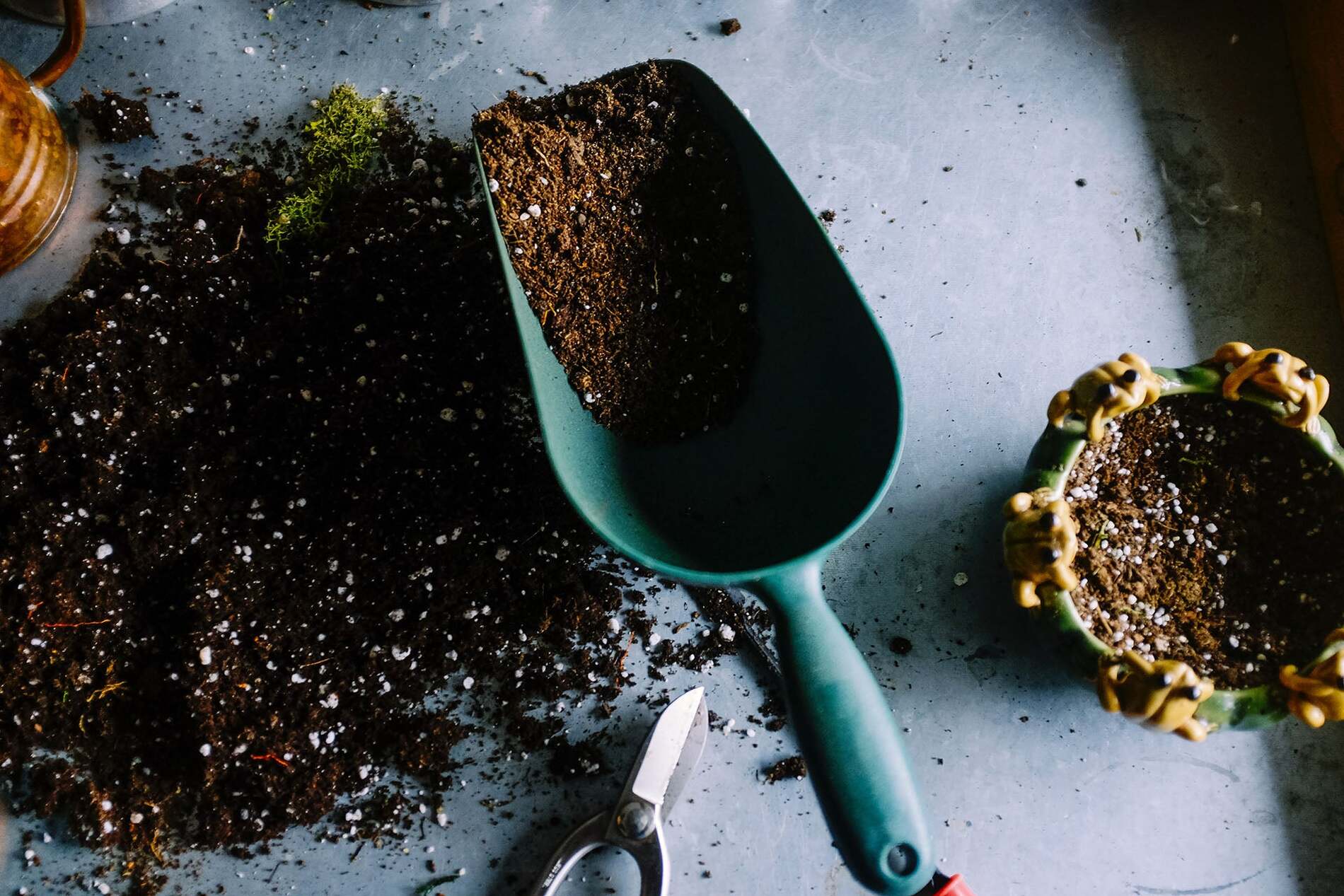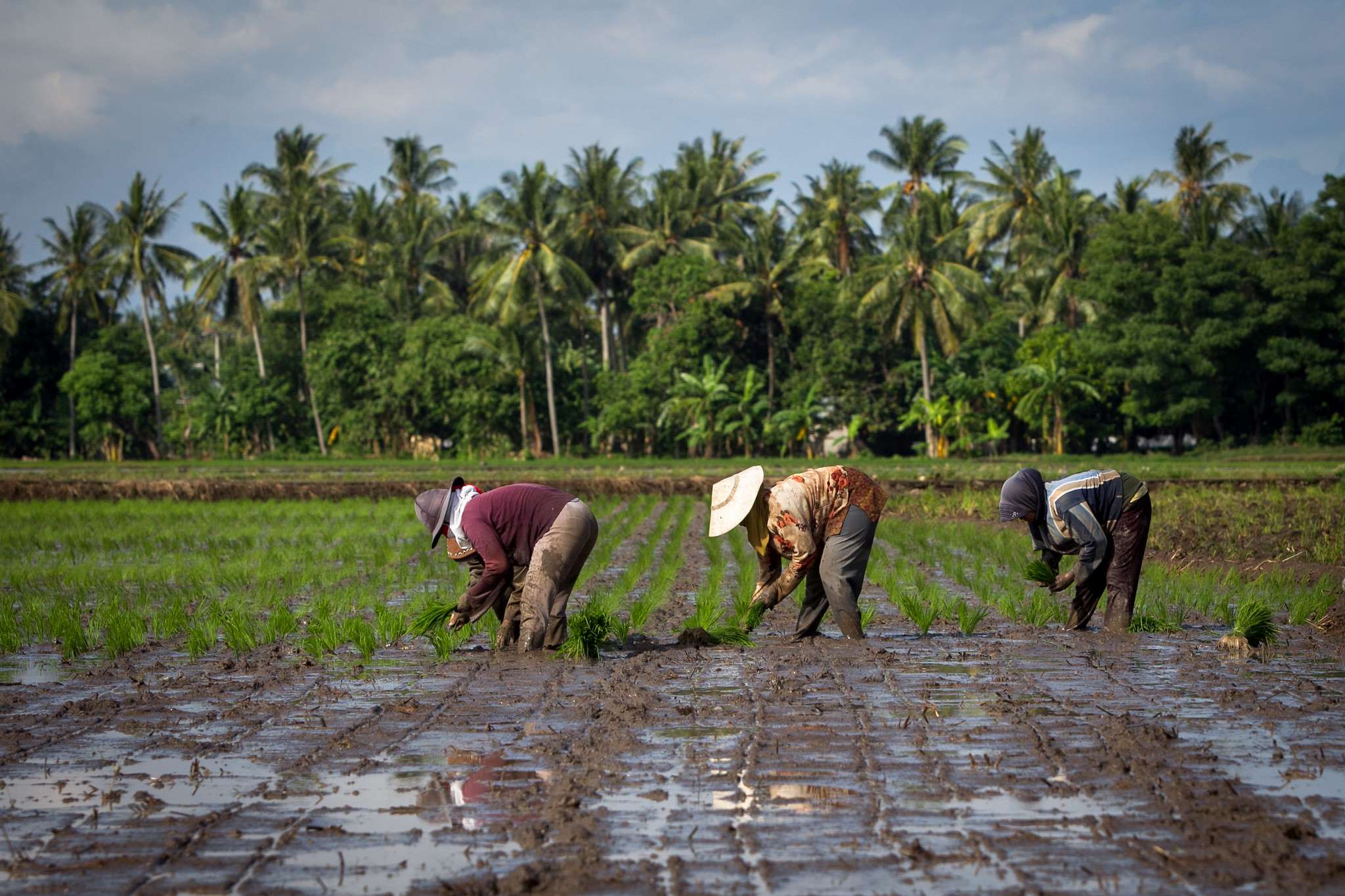Home>Gardening News and Trends>Latest News>What Is The Main Difference Between The Perennial System Of Irrigation


Latest News
What Is The Main Difference Between The Perennial System Of Irrigation
Modified: February 8, 2024
Discover the main difference between the perennial system of irrigation and other methods. Stay updated with the latest news on irrigation techniques and advancements.
(Many of the links in this article redirect to a specific reviewed product. Your purchase of these products through affiliate links helps to generate commission for Chicagolandgardening.com, at no extra cost. Learn more)
Table of Contents
- Introduction
- Definition of the Perennial System of Irrigation
- Definition of the Intermittent System of Irrigation
- Main Differences Between the Perennial and Intermittent Systems
- Water Usage and Conservation in Perennial and Intermittent Systems
- Pros and Cons of the Perennial System of Irrigation
- Pros and Cons of the Intermittent System of Irrigation
- Factors to Consider When Choosing Between Perennial and Intermittent Systems
- Conclusion
Introduction
When it comes to irrigating crops and plants, farmers have two main options: the perennial system of irrigation and the intermittent system of irrigation. Each system has its own unique characteristics and benefits, making it important for farmers to understand the main differences between the two.
The perennial system of irrigation refers to a method of providing a continuous water supply to crops and plants throughout their growing season. This system ensures that the soil remains moist and the plants receive a consistent amount of water, which is essential for their proper growth and development.
On the other hand, the intermittent system of irrigation involves providing water to crops and plants in a periodic fashion. This means that the water supply is not constant, and there may be gaps between irrigation cycles. This system is often used in areas where water resources are limited or where water needs to be conserved.
Understanding the main differences between the perennial and intermittent systems of irrigation is crucial for farmers to make informed decisions about which system to implement. In this article, we will delve into the key distinctions between these two irrigation methods, including their water usage, pros and cons, and factors to consider when choosing one over the other.
By gaining a deeper understanding of the perennial and intermittent systems of irrigation, farmers can effectively manage their water resources, optimize plant growth, and achieve sustainable farming practices. So let’s explore the main differences between these two systems and how they affect agricultural practices.
Definition of the Perennial System of Irrigation
The perennial system of irrigation is a method of providing a continuous water supply to crops and plants throughout their growing season. It is characterized by a consistent and regular delivery of water to the plants, ensuring that they have access to the necessary moisture to thrive.
In the perennial system, a variety of irrigation techniques can be employed, such as drip irrigation, sprinkler irrigation, or surface irrigation. These methods allow for precise control over the distribution of water, ensuring that each plant receives an adequate amount to meet its needs.
One of the primary characteristics of the perennial system is its ability to maintain a constant moisture level in the soil. This is achieved by regularly supplying water based on the water requirements of the crops and the soil’s moisture-holding capacity. The goal is to avoid water stress, which can inhibit plant growth and decrease productivity.
In addition to ensuring consistent water availability, the perennial system also helps with the efficient utilization of water resources. By providing water directly to the plants and avoiding excessive evaporation or run-off, this system minimizes water wastage and promotes water conservation.
The perennial system of irrigation is used in various agricultural settings, from small-scale gardens to large commercial farms. It is particularly beneficial in areas where water is relatively abundant and where crops require a consistent supply of moisture to grow optimally.
Overall, the perennial system of irrigation offers several advantages, including increased crop yield, improved plant health, and reduced water wastage. However, it also requires careful monitoring and management to ensure that water is applied efficiently and effectively.
Definition of the Intermittent System of Irrigation
The intermittent system of irrigation is a method of providing water to crops and plants in a periodic fashion, with intervals between irrigation cycles. Unlike the perennial system which provides a continuous water supply, the intermittent system involves gaps where water is not supplied.
This system is often employed in areas where water resources are limited or where water needs to be conserved. It aims to optimize water usage by providing water only when necessary, based on plant needs and soil conditions.
In the intermittent system, water is typically applied in larger quantities during irrigation events, which occur at predetermined intervals. This allows for deeper soil penetration and encourages plant roots to grow deeper, accessing water sources even during dry periods.
The commonly used irrigation methods in the intermittent system include flood irrigation, furrow irrigation, or even manual watering. These techniques allow for a more controlled application of water, focused on specific areas of the field or individual plants.
While the intermittent system may result in periods of dryness between irrigation cycles, this can have beneficial effects on certain crops. It can stimulate their root development and enhance their tolerance to drought conditions, making them more resilient.
Additionally, the intermittent system of irrigation promotes water conservation by reducing overall water usage. By strategically timing irrigation events and allowing for periods of drought stress, farmers can minimize water wastage and improve water efficiency.
This system is commonly used in regions with arid or semi-arid climates, where water scarcity is a significant concern. It offers flexibility in managing water resources, allowing farmers to adapt irrigation practices in response to changing weather patterns or water availability.
Although the intermittent system has its advantages, such as water savings and improved drought tolerance, it requires careful planning and monitoring to ensure that plants receive adequate moisture without suffering from prolonged water stress.
Main Differences Between the Perennial and Intermittent Systems
The perennial system of irrigation and the intermittent system of irrigation differ in several key aspects, including their approach to water supply, frequency of irrigation, and impact on plant growth. Understanding these differences is essential for farmers to choose the most appropriate irrigation system for their specific needs. Here are the main distinctions between the two systems:
- Water Supply: The perennial system provides a continuous water supply to crops and plants throughout their growing season, ensuring a consistent level of soil moisture. In contrast, the intermittent system involves periodic water supply, with intervals between irrigation events, leading to alternating periods of watering and drought stress.
- Irrigation Frequency: In the perennial system, irrigation events are more frequent and occur regularly to maintain optimal soil moisture levels. On the other hand, the intermittent system requires fewer irrigation events, as it focuses on providing larger quantities of water during each cycle.
- Plant Response: The perennial system promotes continuous plant growth and development, allowing plants to thrive in a consistently moist environment. In contrast, the intermittent system stimulates plant resilience to drought stress by encouraging deeper root growth and improving water-use efficiency.
- Water Usage: The perennial system may require a larger overall water supply due to its continuous water delivery. However, it can be more efficient in terms of water usage, as it minimizes water loss through evaporation and runoff. The intermittent system, by contrast, conserves water by providing water only when necessary and optimizing its usage during each irrigation event.
- Adaptability: The perennial system is typically suitable in areas with abundant water resources and crops that require consistent moisture. It may be more challenging to implement the perennial system in regions with limited water availability or in fields with soil that has a low water-holding capacity. The intermittent system, however, is advantageous in arid or semi-arid climates and for crops that can tolerate or benefit from periodic drought stress.
These differences highlight the varied approaches to water supply, irrigation frequency, and plant response between the perennial and intermittent systems of irrigation. Choosing the right system depends on factors such as water availability, crop type, climate conditions, and desired watering efficiency.
Water Usage and Conservation in Perennial and Intermittent Systems
The water usage and conservation practices differ between the perennial system of irrigation and the intermittent system of irrigation. Understanding these differences is crucial for optimizing water resources and achieving sustainable farming practices. Let’s explore how water is utilized and conserved in each system:
Perennial System: In the perennial system, water is continuously supplied to crops and plants, ensuring consistent moisture levels in the soil. This can potentially result in higher overall water usage compared to the intermittent system. However, several factors contribute to water conservation in the perennial system:
- Efficient Water Application: Various irrigation methods used in the perennial system, such as drip irrigation or sprinkler irrigation, allow for precise water delivery. This minimizes water loss through evaporation or runoff, improving water-use efficiency.
- Monitoring and Control: Regular monitoring of soil moisture levels and plant water requirements enables farmers to fine-tune irrigation scheduling. By providing water only when needed, excessive water application is avoided, reducing water wastage.
- Water Recycling: Water that is not taken up by the plants can be recaptured and recycled within the irrigation system. This reduces overall water usage by utilizing the same water multiple times before it is completely lost or drained away.
Intermittent System: The intermittent system of irrigation prioritizes water conservation by providing water to crops at specific intervals. Although water usage may be lower compared to the perennial system, conservation practices in the intermittent system include:
- Strategic Timing: By strategically timing irrigation events, farmers can ensure that water is supplied when plants need it most. This reduces water loss through evaporation and prevents overwatering.
- Deep Soil Penetration: The intermittent system often involves applying larger quantities of water during irrigation events. This encourages deeper soil penetration and root growth, allowing plants to access moisture during dry periods and minimizing water requirements.
- Drought Tolerance Development: The intermittent system exposes crops to periods of drought stress, which can stimulate their resilience and ability to survive with limited water resources. This reduces overall irrigation needs and enhances water-use efficiency.
Both the perennial and intermittent systems of irrigation offer opportunities for effective water usage and conservation. However, it is crucial for farmers to closely monitor and manage irrigation practices to ensure water is utilized efficiently and wastage is minimized.
Pros and Cons of the Perennial System of Irrigation
The perennial system of irrigation offers several advantages and disadvantages that farmers should consider when determining if it is the right choice for their specific needs. Let’s explore the pros and cons of the perennial system:
Pros:
- Increased Crop Yield: The continuous water supply in the perennial system ensures that plants have access to the necessary moisture for optimal growth and productivity. This can result in higher crop yields compared to other irrigation methods.
- Improved Plant Health: Consistent soil moisture levels promote healthier plants by reducing water stress and minimizing the risk of drought-related issues. This can lead to better plant development, disease resistance, and overall plant vigor.
- Water Efficiency: The precise control over water application in the perennial system, such as drip or sprinkler irrigation, helps minimize water loss through evaporation or runoff. This enhances water-use efficiency and reduces water wastage.
- Flexible Crop Options: The perennial system of irrigation allows for a wide range of crop options, as it provides a consistent water supply that can meet the different water requirements of various plants. This flexibility enables farmers to diversify their crops and maximize their yield potential.
- Reduced Soil Erosion: By maintaining continuous soil moisture, the perennial system helps prevent soil erosion caused by rainfall or irrigation events. This is particularly beneficial in areas with vulnerable soil conditions or steep slopes.
Cons:
- Higher Water Usage: The continuous water supply in the perennial system requires a larger overall water supply compared to intermittent systems. This can be a limitation in regions with limited water resources or areas prone to drought conditions.
- Maintenance Challenges: The perennial system of irrigation requires regular monitoring and management to ensure that water application is optimized. This includes checking for clogged emitters or maintaining proper system functionality, which can be time-consuming and labor-intensive.
- Increased Energy Consumption: Some irrigation methods used in the perennial system, such as sprinkler systems, may require energy for operation. This can contribute to higher energy consumption and associated costs.
- Compatibility with Soil Types: The success of the perennial system can vary depending on soil type. Soils with lower water-holding capacity may require additional management practices, such as soil amendments or improved drainage, to ensure efficient water utilization.
- Higher Investment Costs: Implementing the perennial system of irrigation, especially with advanced technologies like drip irrigation, may require a higher initial investment compared to other irrigation methods. However, this cost may be offset by increased crop yields and water-use efficiency in the long run.
Considering the pros and cons of the perennial system of irrigation will help farmers make informed decisions about whether to implement this system on their farms. It is essential to evaluate factors such as water availability, crop selection, and long-term sustainability goals to determine if the benefits outweigh the potential drawbacks.
Pros and Cons of the Intermittent System of Irrigation
The intermittent system of irrigation offers unique advantages and disadvantages that farmers should consider before choosing this method for their agricultural needs. Let’s explore the pros and cons of the intermittent system:
Pros:
- Water Conservation: The intermittent system of irrigation focuses on providing water to crops at specific intervals, optimizing water usage and minimizing water wastage. This conservation-conscious approach is especially beneficial in regions with limited water resources or areas prone to drought conditions.
- Improved Drought Tolerance: Exposure to periodic drought stress in the intermittent system can promote stronger and more resilient plants. This improves their drought tolerance, allowing them to survive and thrive during dry periods, ultimately contributing to sustainable farming practices.
- Cost Savings: The intermittent system often requires fewer irrigation events compared to the perennial system, resulting in potential cost savings in terms of water usage, energy consumption, and labor. This can be particularly advantageous for farmers on a tight budget.
- Adaptability to Arid Climates: The intermittent system is well-suited for arid or semi-arid climates where water availability is limited. By understanding crop water requirements and optimizing irrigation timing, farmers can effectively manage water resources and maintain crop production in these challenging environments.
- Reduced Disease Risk: The intermittent system of irrigation can help reduce the risk of certain plant diseases that thrive in consistently moist conditions. By allowing the soil to partially dry out between irrigation events, the system creates an environment less conducive to disease development.
Cons:
- Periods of Drought Stress: The intermittent system involves alternating periods of watering and drought stress. This can be challenging for crops with high water demands or those that are more sensitive to water fluctuations. Proper crop selection and management practices are needed to ensure the health and productivity of the plants.
- Risk of Underwatering: In the intermittent system, there is a potential risk of underwatering if irrigation intervals or water volumes are not accurately adjusted to meet the plants’ needs. This can result in reduced crop yields or poor plant health.
- Monitoring and Timing Challenges: Proper timing is crucial in the intermittent system to ensure optimal irrigation events and prevent prolonged drought stress. Monitoring soil moisture levels, weather conditions, and plant water requirements is essential but can be demanding in terms of time and resources.
- Less Flexibility in Crop Selection: The intermittent system may limit crop selection to those that are more adaptable to varying water availability and can tolerate periodic drought stress. Some high water-demanding crops may not be suitable for this system without additional management practices to address their specific needs.
- Higher Variability in Crop Yield: The intermittent system’s dependence on periodic water supply can result in higher yield variability compared to the perennial system. Factors such as rainfall patterns, irrigation efficiency, and crop response to intermittent watering can influence crop performance.
Evaluating the pros and cons of the intermittent system of irrigation is essential for farmers to make informed decisions about its suitability for their farming operations. Factors such as water availability, crop tolerances, and long-term sustainability goals should be considered when opting for this irrigation method.
Factors to Consider When Choosing Between Perennial and Intermittent Systems
Choosing between the perennial system of irrigation and the intermittent system of irrigation requires careful consideration of various factors. Each system has its own advantages and disadvantages, and farmers must assess their specific needs and circumstances to make an informed decision. Here are some key factors to consider:
- Water Availability: Assess the availability of water resources in your area. If water is abundant and consistently accessible, the perennial system may be more feasible. However, if water is scarce or limited, the intermittent system’s water conservation practices may be a better fit.
- Crop Water Requirements: Different crops have varying water needs. Consider the water requirements of your crops and select a system that can adequately meet those needs. Certain crops may thrive in a consistent moisture environment provided by the perennial system, while others may benefit from intermittent watering and develop drought tolerance.
- Climate Conditions: Evaluate the climate of your region. Arid or semi-arid climates with frequent drought periods may favor the intermittent system, as it can conserve water and enhance drought tolerance. However, if your region has a consistent water supply or experiences frequent rainfall, the perennial system may be more suitable.
- Farm Size and Resources: Consider the scale of your farm and the resources available to you. The perennial system may require more extensive infrastructure, such as irrigation systems and monitoring equipment, which can be costly. The intermittent system, on the other hand, may be more adaptable and feasible for smaller farms with limited resources.
- Labor and Management: Evaluate the level of labor and management capacity you can allocate to irrigation practices. The perennial system may require more monitoring and management, as water needs to be consistently supplied. The intermittent system, while requiring attention during watering periods, may allow for more flexibility and reduced maintenance intervals.
- Sustainability Goals: Consider your long-term sustainability goals as a farmer. Evaluate the environmental impact of each irrigation system, including water conservation practices and the use of energy resources. Choose the system that aligns with your sustainability objectives and can help you achieve more efficient and sustainable farming practices.
Each farm is unique, and the choice between the perennial system and the intermittent system should be based on a careful assessment of these factors. It is also worth noting that a combination of both systems, known as hybrid systems, may be applicable in certain cases, providing the benefits of both continuous water supply and water conservation.
Consulting with agricultural experts and considering local knowledge and experience can further guide your decision-making process. By selecting the irrigation system that best suits your specific needs and circumstances, you can optimize water usage, promote crop health, and enhance the overall sustainability of your farming operation.
Conclusion
Choosing the right irrigation system is essential for optimizing water usage, promoting crop health, and achieving sustainable farming practices. The perennial system of irrigation and the intermittent system of irrigation each offer distinct advantages and disadvantages that farmers must consider when making their decision.
The perennial system provides a continuous water supply, allowing for consistent moisture levels and promoting optimal plant growth and productivity. It can be advantageous in areas with abundant water resources and for crops that require a constant water supply. However, it may require more water, higher maintenance, and increased energy consumption.
On the other hand, the intermittent system of irrigation focuses on water conservation by providing water at intervals, stimulating plant resilience to drought conditions, and reducing water usage. It is well-suited for regions with limited water availability and for crops that can tolerate or benefit from intermittent watering. However, careful monitoring, timing, and crop selection are vital to ensure successful implementation.
When choosing between the two systems, farmers should consider factors such as water availability, crop water requirements, climate conditions, farm size and resources, labor and management capacity, and long-term sustainability goals. By evaluating these factors, farmers can make an informed decision that aligns with their specific needs and enables them to optimize water usage, enhance crop productivity, and contribute to sustainable farming practices.
Furthermore, it’s important to note that hybrid systems, combining elements of both perennial and intermittent irrigation, can be considered for certain farming scenarios, ensuring the benefits of continuous water supply and water conservation practices.
Ultimately, by carefully assessing these factors, seeking expert advice, and considering local conditions, farmers can make a well-informed decision about which irrigation system is best suited to their needs, enabling them to efficiently manage water resources, enhance crop growth, and contribute to sustainable agriculture.
